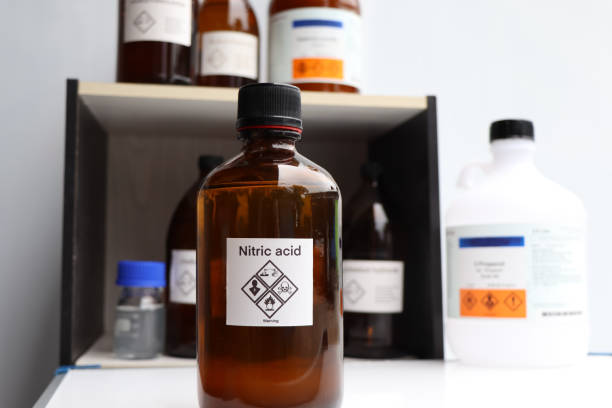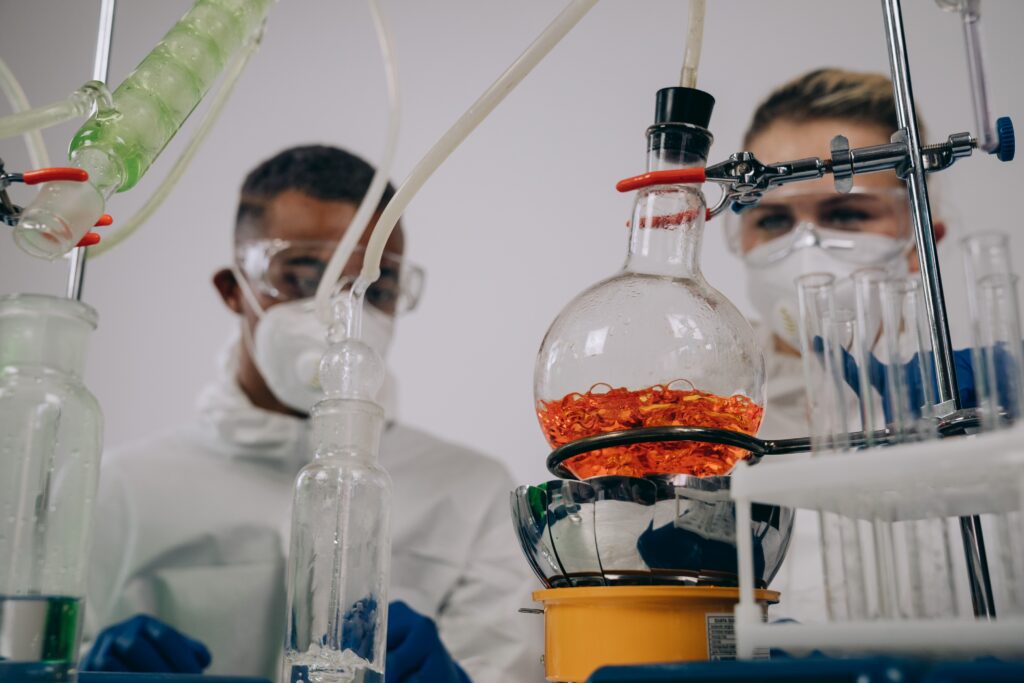In the ever-evolving world of science and industry, chemicals play a vital role in shaping our lives and driving technological advancements. Nitric acid, a potent and versatile chemical compound, has found numerous applications across various sectors. As we step into 2023, this blog will explore 10 uses of nitric acid, highlighting its significance and impact on our modern society.
1. Fertilizer Production :
One of the primary applications of nitric acid is in the production of fertilizers. Through the Haber process, ammonia is synthesized, and 2 uses of nitric acid to convert the ammonia into ammonium nitrate. This compound serves as a crucial nitrogen-rich fertilizer, enhancing crop yields and bolstering global food production to meet the demands of an ever-growing population.
1. Mixing and blending:
Depending on the desired nutrient content, various components are mixed and blended to create a balanced fertilizer formula. This step ensures that the final product contains the right proportion of essential nutrients.
2. Raw material selection:
Fertilizer production begins with the selection of appropriate raw materials. Common sources of nutrients used in fertilizers include natural minerals like potassium chloride, phosphate rock, and ammonia-rich gases like anhydrous ammonia or urea.

2. Explosives Manufacturing :
10 uses of Nitric acid is a key ingredient in the production of explosives, particularly in the synthesis of nitroglycerin. By combining nitric acid with glycerol, a highly explosive substance is obtained, which is further utilized in various military and industrial applications, including mining, construction, and demolition.
3. Dyes and Pigments :
The textile and printing industries benefit significantly from nitric acid’s role in the manufacturing of dyes and pigments. Nitration of aromatic compounds using nitric acid produces a wide array of vibrant colors used in fabrics, paints, and inks, adding beauty and artistic expression to our everyday lives.
4. Cleaning and Etching Agent :
In the electronics industry, nitric acid is employed as a cleaning and etching agent. During the manufacturing of semiconductors and printed circuit boards, it is used to remove impurities and unwanted materials, ensuring the smooth functioning and reliability of electronic devices.
5. Precious Metal Refining :
Nitric acid plays a crucial role in extracting and refining precious metals, such as gold and platinum. The process involves dissolving the metals in 10 uses of nitric acid to form soluble compounds, allowing for easier separation and purification, thereby sustaining the demand for precious metals in various industries.
1 Collection and Preparation:
The source material, such as ore or scrap, is collected and prepared for the refining process. This may involve crushing, grinding, or other physical processes to break down the material into smaller pieces.
2.Smelting:
The prepared material is then smelted in a furnace, where it is heated to high temperatures. This process helps to separate the precious metals from the other elements present in the material. The metal is melted and separated from the impurities in the form of a molten mass.
6. Rocket Propulsion :
The aerospace sector relies on the power of nitric acid in the form of nitrogen tetroxide (N2O4) as an oxidizer in rocket propulsion systems. It is favored for its stability, high performance, and ability to be stored as a storable liquid propellant, making it a go-to choice for numerous space missions and satellite launches.
7. Photography :
The art of photography, though heavily digitized, still retains the use of nitric acid in some specialized processes. Nitric acid is employed in the preparation of collodion, a crucial component in creating glass plate negatives, adding an element of nostalgia and vintage charm to modern photography.
8. Medical Applications :
In medicine, nitric acid’s derivative, nitric oxide (NO), has shown potential as a vasodilator, aiding in the treatment of cardiovascular diseases and pulmonary hypertension. Additionally, nitric acid is used in the production of certain pharmaceuticals, further contributing to advancements in healthcare.
9. Water Treatment :
Nitric acid is utilized in water treatment processes to neutralize alkaline waters and adjust pH levels. It helps to control the growth of harmful bacteria and prevent scaling in industrial water systems, ensuring safe and efficient water usage across various sectors.

10. Analytical Chemistry :
In analytical chemistry, nitric acid is an indispensable reagent for the digestion and dissolution of various substances, allowing scientists to accurately determine the concentration of elements and compounds in complex samples. Its role in analytical chemistry drives discoveries and advancements in various scientific disciplines.
Conclusion
10 uses of Nitric acid, with its multifaceted properties and diverse applications, continues to be an essential chemical compound in our ever-changing world. From fertilizers to explosives, from rocket propulsion to medical treatments, the significance of nitric acid in 2023 cannot be overstated. As we move forward, further research and technological advancements will likely expand its applications, making nitric acid an invaluable asset to numerous industries, while ensuring a safer and more efficient future for all.
